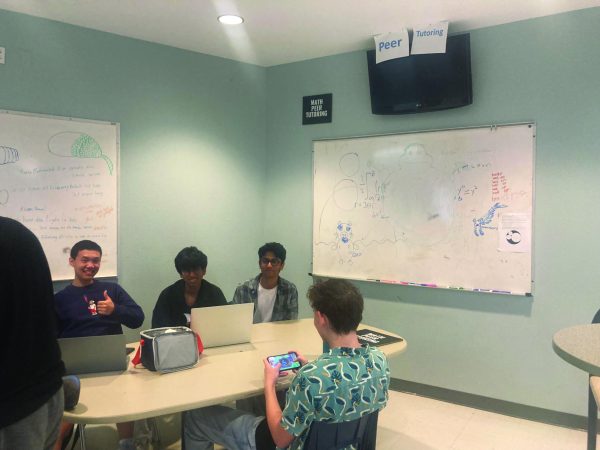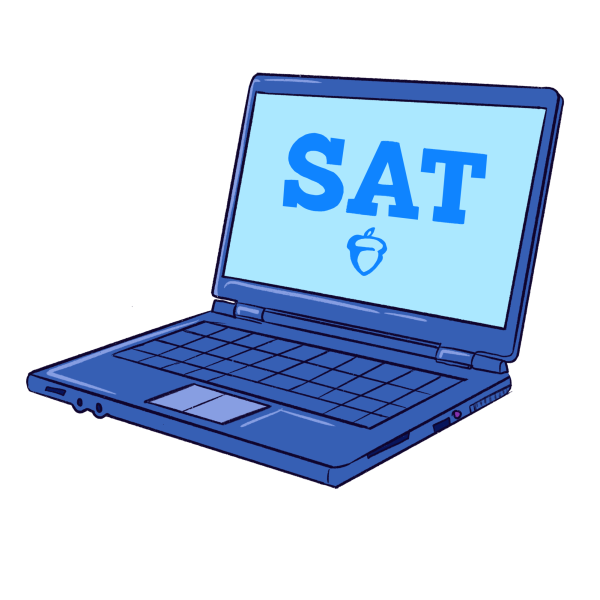AISD magnets: the good and the bad
April 9, 2019
Magnet programs are not unique to Austin. By the 1980s, most major cities had magnet schools that were meant to attract kids from all-over a city to attend a school outside their assigned, district created attendance zone. While LASA was nominally an attempt to create a technologically advanced school, it was also part of on-going desegregation efforts.This effort would help desegregate previously segregated school zones.
LASA principal Stacia Crescenzi said that magnets were brought to the Austin Independent School District (AISD) by business professionals to help create more technologically proficient high school graduates to Austin.
“They asked the district to put a science magnet together so that more students would be able to take those classes, go to college, major in those fields and come back,” Crescenzi said. “At the heart of it, that’s all they wanted.”
While the official intent for magnet schools in Austin is fairly straightforward, others feel that they may have also served other purposes in the city. Former AISD Board of Trustee member and associate professor of African and African Diaspora Studies and Anthropology of the African Diaspora at The University of Texas at Austin, Edmund T. Gordon, believes that magnets’ purpose in Austin was also integration among other things.
“There were three things that were going on as I understand it,” Gordon said. “That is AISD decided they wanted to have a magnet school where they had an advanced, rigorous opportunity for a proportion of their student population. Reason two was that… even though there had been busing and other kinds of things to achieve integration, busing was wildly unpopular and being rejected by a whole bunch of folk. Then, three was that AISD had made a mistake of misjudging demographic patterns by putting LBJ within three miles of Reagan.”
No matter what the most significant purpose of magnet schools was, they have proved to be a controversial and complex issue that people have polarized opinions on. While the issue is very complicated, Kealing Middle School Principal Kenisha Coburn sees some clear positives to the presence of magnet schools in AISD. Coburn considers the fact that magnet schools are effective at gathering similarly minded students to one campus a benefit.
“I think it’s exciting to have a model that pulls students from all over the city where they get to actually learn, interact with each other everyday with kids that wouldn’t ordinarily connect,” Coburn said. “I also think there’s a legitimate need for some level of academic rigor that can come from magnet programs. And it’s hard to execute depending on your volume or lack thereof in a more traditional campus or non magnet campus. Our students need that.”
Crescenzi noted the uniqueness of magnet schools because of the different types of classes that they are able to offer.
“I think that it’s important to recognize that if LASA didn’t exist, a lot of the particular classes that students are able to take here would not exist in the city of Austin in public schools,” Crescenzi said. “If everybody went back and didn’t go to LASA, what school would have 8 languages? I think there is a huge benefit to Austin having an academic magnet so that kids can come be with others students that are interested in classes that they are interested in, whether that’s in humanities or the sciences or whatever.”
LASA parent and co-chair of the Campus Advisory Council, Melanie Plowman, agrees with Crescenzi that magnet schools deliver a specialized learning opportunity for students that want it.
“I think that [magnet schools] provide a unique singular academic opportunity that is free that I don’t think anyone can get anywhere else. I think for those reasons there’s been a lot of growth. I think it does open up the world to them and helps them develop skills and analytical thinking and academic capabilities in people that they would lack anywhere else. I think it opens up opportunities and the world to them after high school if they’re willing to do the work and come to LASA and take advantage of all that.
Former Trustee Gordon, argues that instead of having challenging academics centered in one school, magnet type education should be spread throughout the district.
“There should be rethinking of what the criteria for a textbook magnet in the district is,” Gordon said. “There needs to be far more rigorous education opportunities for students in the district, and that they not all be concentrated on one campus on one school. So that those things be spread out and be part of programs of regular high schools rather than of high school programs.”
Magnet schools also help attract students back to AISD schools who were previously attending private or charter schools even though they live in AISD attendance zones. These schools also come with issues, however.
The school within a school format of LASA and LBJ no longer serves the goal of integration that was set when they were first being developed in Austin. The two schools are still fairly segregated, resembling the segregation of the city of Austin. While LBJ is 96 percent black and Latino, LASA’s student body is only 21 percent black and Latino.
“I don’t think it’s a secret, but Austin is, like many cities in our country, very racially and economically segregated,” Coburn said. “Some of those things are more apparent in magnet schools.”
Not only do magnets not encourage integration and diversity, Gordon believes they increase segregation and separation between students.
In terms of further integration at a school like LBJ, they’ve not done that very well either because they’ve set up a situation of relatively strict racial segregation,” Gordon said.
While these issues are prevalent in AISD and Austin as a whole, there have been efforts to begin to improve integration and diversity in schools.
“We’ve already started, but there’s more room to grow,” Coburn said. “It’s magnet programs being held accountable to the values that they hold, and also willingness to deal with some broader issues in our community that play into not just who we’re recruiting, but also which students feel like their capable of attending. My hope for us is that we have an equitable process and increased diversity, but in a way where kids feel that they can be successful.”
According to Crescenzi, LASA and other magnets can have issues with its internal culture and environment. These issues are caused by the highly academic focused environment.
“You get this sort of culture of competitiveness, this culture that’s all about who’s better… I think that’s the worst part of it,” Crescenzi said. “It’s part of the issue when you bring kids together who are, mostly, very academically motivated. For most kids, prior to coming to LASA, they got a pat on the back for being smart and for their grades, and so they started to internalize as a younger person that what makes me special is this number, people telling me how smart I am. All of a sudden [they’re in] this crazy skewed population where everybody is that smart and everybody can’t get an A. It’s a tough ego place to be in this stage of adolescence and development.”
In 2017, a multi-billion dollar bond passed that included LASA’s move to the Eastside Memorial High School Campus. The move have sparked controversy as some believe it exacerbates the segregation issues within the district.
“This move is what I’d call the biggest act of segregation in the schools history,” Gordon said. “There shouldn’t be two separate schools, you’ve gotta put them back together, but that’s just not gonna happen. The decision has already been made.”
Others disagree that the move does anything to increase segregation of magnet schools.
“I don’t have that same view,” Plowman said. “This is so anecdotal, and it’s not my neighborhood, but I have heard anecdotes that some people don’t want to come to LASA. It’s not comfortable for them to choose LASA. … There was a sentiment expressed that LBJ would like their school back. … In a lot of communities the neighborhood school functions more as the neighborhood center, and us being there and all our traffic we bring in means we’ve displaced that opportunity. I just think there’s a lot of different things to think about.”
LASA’s move from LBJ may also have many positive effects on communities, as it would make the school accessible to more students.
“I think the big point of separation was size because they have about 100 kids every year who are totally qualified who are not getting in just because we are totally maxed out…” Plowman said. “We’ve developed a great opportunity to give it to all the kids who’ve applied and said, ‘I want it, I’ve been through all the steps. I would like to come.’”
Whether or not magnet schools are liked, Gordon agrees that getting rid of them will do little to benefit the community. Instead reforms should be made.
“I don’t think eliminating the opportunity for rigorous education is going to be a solution to the problem,” Gordon said. “The problem of segregation, residential segregation, segregation in general, and segregation between schools, within schools is a fact of life in Austin ISD and in Austin city. We’re just not addressing it.”
Coburn feels that the conversation about segregation needs to change.
“The frustrations are valid,” Coburn said. “I don’t think that getting rid of magnet programs is a solution to that problem. I would love to see the dialogue shift. Not because the concerns are wrong, but because I would love to see more on how do we fix this?”
Coburn believes that magnet programs are, at least, an imperfect solution to the problem. She thinks that there should be some amendments made in response to the concerns raised, but that getting rid of magnets altogether isn’t a practical solution with growing academic competition.
“Globalization means that we are not just competing with students in our country, we’re also competing with students around the globe so any opportunity for students to be pushed given higher standards,” Coburn said. “I think we need to take those opportunities and I think some magnet programs specialize in that.”










